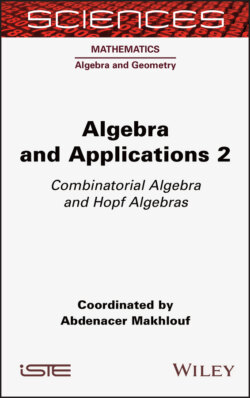Читать книгу Algebra and Applications 2 - Группа авторов - Страница 8
1.1. Introduction
ОглавлениеSince the pioneering work of Cayley in the 19th century (Cayley 1857), we have known that rooted trees and vector fields on the affine space are closely related. Surprisingly enough, rooted trees were also revealed to be a fundamental tool for studying not only the integral curves of vector fields, but also their Runge–Kutta numerical approximations (Butcher 1963).
The rich algebraic structure of the k-vector space spanned by rooted trees (where k is some field of characteristic zero) can be, in a nutshell, described as follows: is both the free pre-Lie algebra with one generator and the free non-associative permutative algebra with one generator (Chapoton and Livernet 2001; Dzhumadil’daev and Löfwall 2002), and moreover, there are two other pre-Lie structures on , of operadic nature, which show strong compatibility with the first pre-Lie (respectively the NAP) structure (Chapoton and Livernet 2001; Calaque et al. 2011; Manchon and Saidi 2011). The Hopf algebra of coordinates on the Butcher group (Butcher 1963), that is, the graded dual of the enveloping algebra (with respect to the Lie bracket given by the first pre-Lie structure), was first investigated in Dür (1986), and intensively studied by Kreimer for renormalization purposes in Quantum Field Theory (Connes and Kreimer 1998; Kreimer 2002), see also Brouder (2000).
This chapter is organized as follows: the first section is devoted to general connected graded or filtered Hopf algebras, including the renormalization of their characters. The second section gives a short presentation of operads in the symmetric monoidal category of vector spaces, and the third section will treat pre-Lie algebras in some detail: in particular, we will give a “pedestrian” proof of the Chapoton-Livernet theorem on free pre-Lie algebras. In the last section, Rota-Baxter, dendriform and NAP algebras will be introduced.
